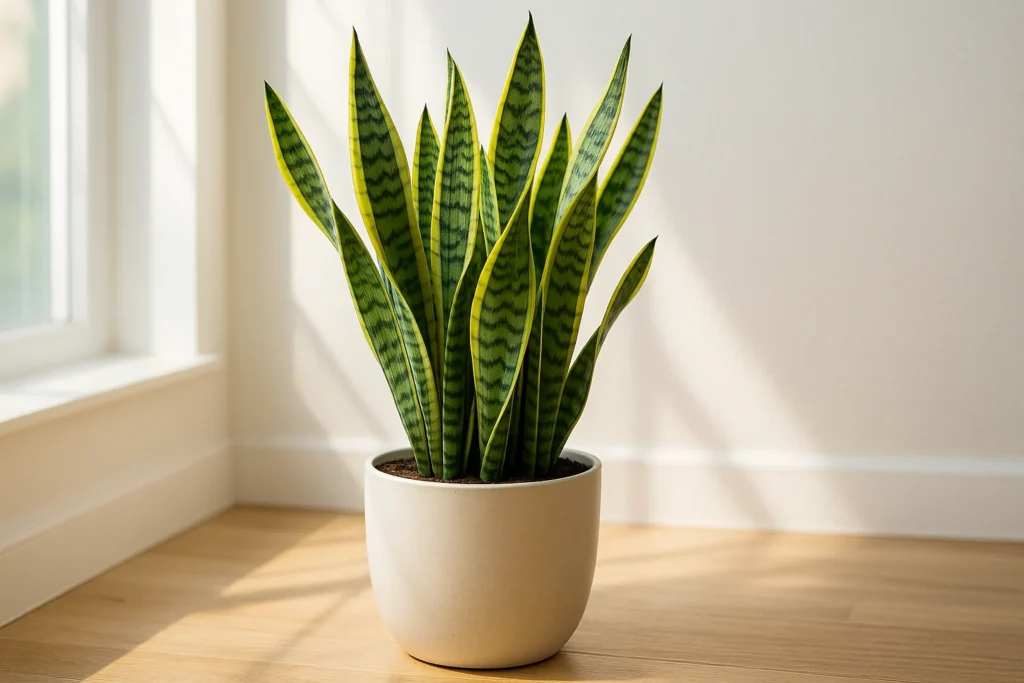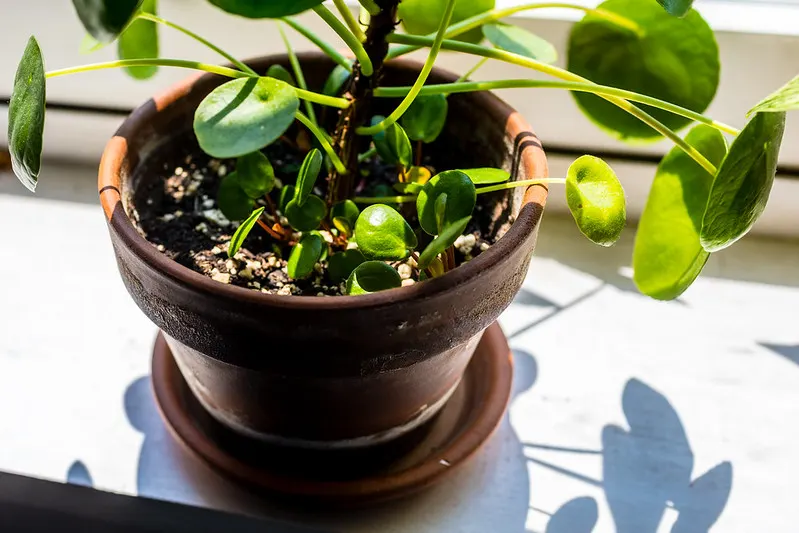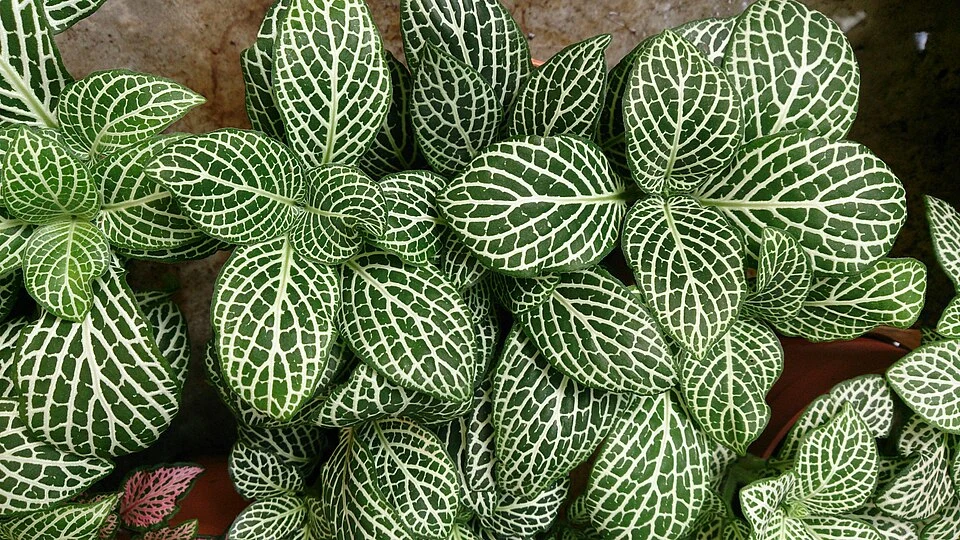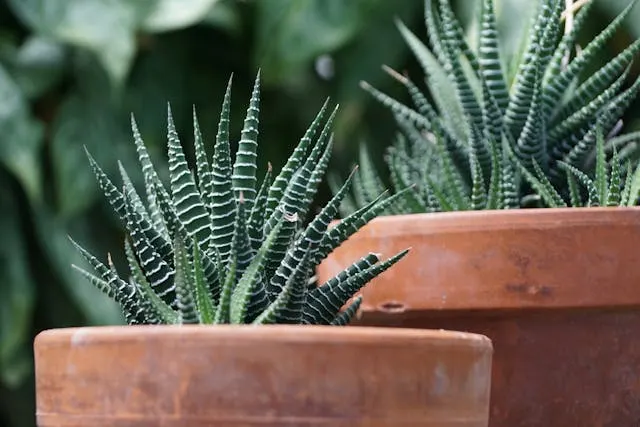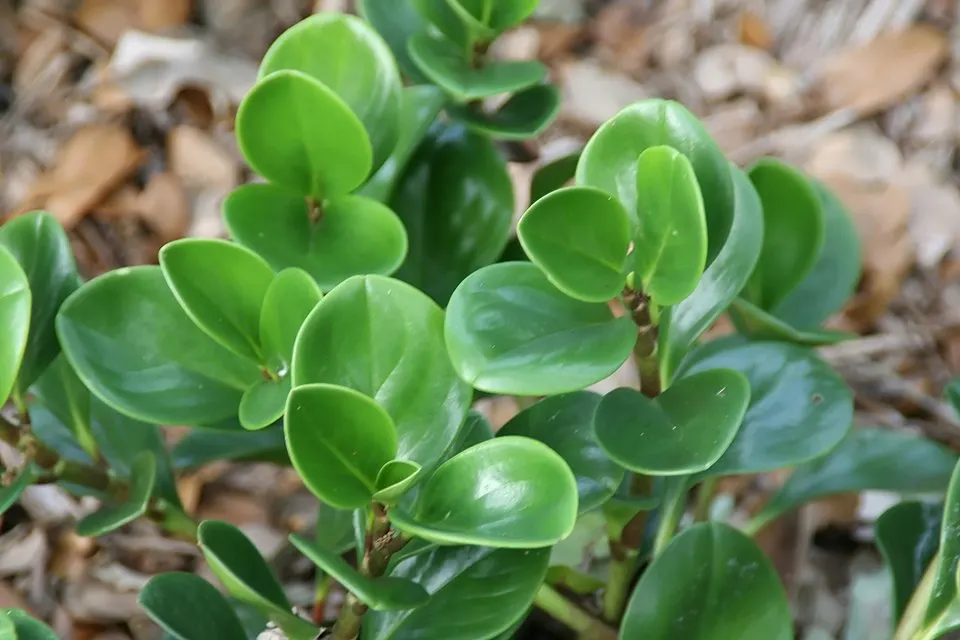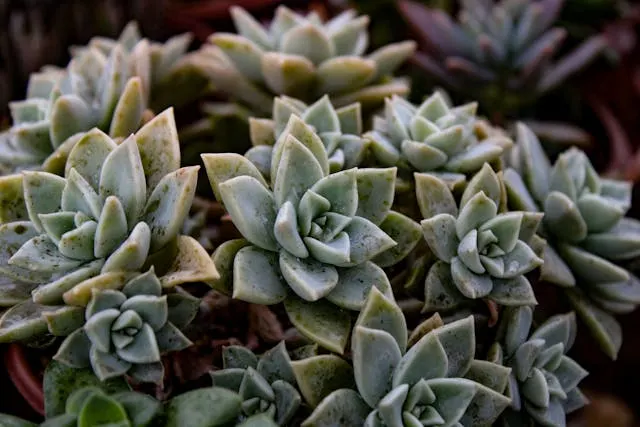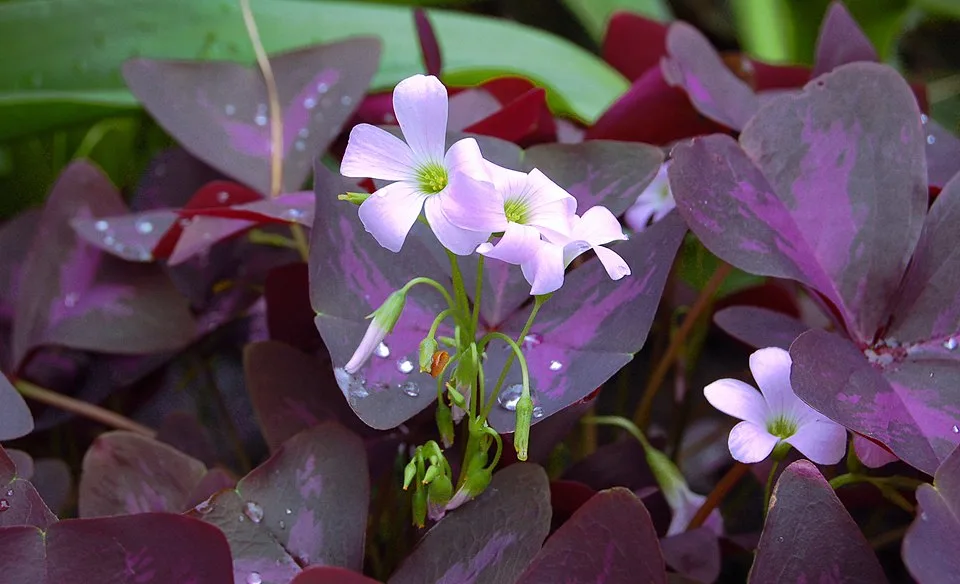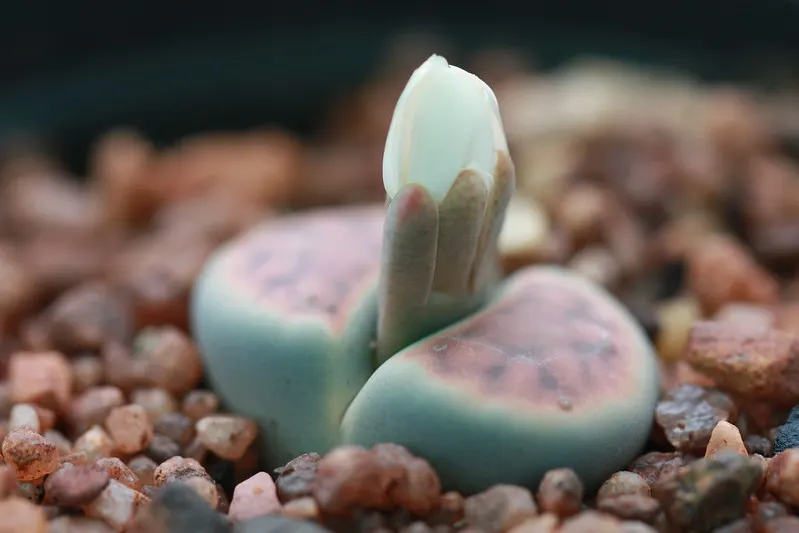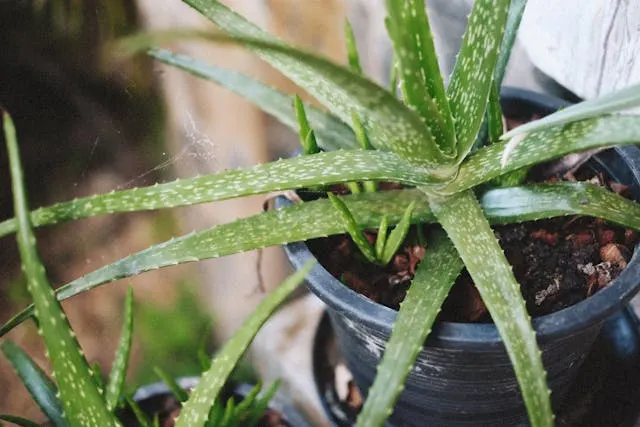10 Plants That Are Small (Perfect for Desks, Shelves & Small Rooms)

Plants that are small are perfect for limited spaces, tight corners, or simple home upgrades. They fit on windowsills, desks, and bookshelves—and don’t ask for much. Whether you’re new to houseplants or just want something low effort, small plants that are easy to take care of can transform your space without overwhelming it.
In this guide, you’ll find reliable plants that are small, selected for their compact size, minimal care needs, and ability to thrive indoors. We’ve included top picks for small house plants that are easy to care for, ideal for apartments, offices, and low-light rooms. These are the kinds of small plants that are easy to grow, even if your green thumb is more of a work-in-progress.
Before choosing your plants, use our Indoor Plant Watering Calculator to fine-tune your watering routine—it’s especially helpful for small pots. If you’re fertilizing, our NPK Fertilizer Calculator helps avoid overfeeding fragile roots. Planning out shelf or container space? Try our Garden & Plant Spacing Calculator to fit everything without crowding.
For research-backed tips on houseplant care, we recommend this science-based guide from ScienceDirect.
Let’s get into the best plants that are small, easygoing, and built for modern indoor life.
Table of Contents
Best Plants That Are Small (Easy to Grow & Care For Indoors)
1. Snake Plant (Sansevieria trifasciata)
The Snake Plant is one of the most dependable plants that are small and extremely tolerant of neglect. Its upright, sword-like leaves grow slowly and stay compact, making it ideal for shelves, tabletops, or small corners. It thrives in a variety of conditions—low light, dry air, and inconsistent watering won’t faze it. The green-and-yellow pattern on the leaves adds structure and texture without requiring high maintenance.
Snake Plants are excellent small plants that are easy to take care of, particularly for people who travel or forget to water regularly. With its air-purifying qualities, it’s also a functional choice for bedrooms and offices.
- Botanical Name: Sansevieria trifasciata
- Best For: Low-light rooms, offices, modern interiors
- Care Level: Beginner-friendly
- Light Needs: Low to bright indirect light
- Water Needs: Every 2–3 weeks; allow soil to dry completely
- Pet Safe: No – toxic to cats and dogs if ingested
Why it works: Snake Plants are top-tier plants that are small and practically unkillable. They don’t droop, shed, or demand constant care, making them perfect for anyone needing small house plants that are easy to care for.
Not sure about where to place it? Read Should Snake Plants Be in Direct Sunlight? to understand how much light is too much.
2. Pilea Peperomioides (Chinese Money Plant)
The Pilea Peperomioides, also known as the Chinese Money Plant, is one of the most stylish plants that are small and easy to grow indoors. With its round, coin-shaped leaves on thin, arching stems, it adds visual interest without taking up much space. Native to the mountains of Yunnan, China, this plant has become a favorite in minimalist and Scandinavian-inspired interiors.
Aside from its good looks, it’s also one of the best small house plants that are easy to care for. It’s fast-growing under the right conditions and propagates readily, so you can share baby plants with friends or expand your own collection. Its size maxes out around 12 inches, making it ideal for shelves, windowsills, or tight countertops.
- Botanical Name: Pilea peperomioides
- Best For: Bright, modern spaces; gifting; propagation
- Care Level: Beginner to intermediate
- Light Needs: Bright indirect light
- Water Needs: Weekly; allow top inch of soil to dry out
- Pet Safe: Yes – non-toxic to pets
Why it works: If you’re after plants that are small but lively, the Chinese Money Plant delivers. It’s a great option for those wanting small plants that are easy to grow, especially if you’re interested in propagation and watching new shoots develop.
Pro Tip: For best results, rotate the plant weekly to keep it growing evenly toward the light. Need help spacing pots on a windowsill or shelf? Use our Garden & Plant Spacing Calculator to avoid overcrowding.
3. ZZ Plant (Zamioculcas zamiifolia)
The ZZ Plant is one of the toughest plants that are small and forgiving, often called the “unkillable houseplant.” Its thick, glossy leaves grow in neat, vertical stalks that stay compact and upright, making it perfect for tight spaces. ZZs store water in their rhizomes, which means they can survive long dry spells without wilting or showing stress.
If you’re looking for small plants that are easy to take care of, the ZZ Plant is hard to beat. It tolerates low light, infrequent watering, and a wide range of temperatures, making it a favorite for office desks, low-lit rooms, and travel-heavy lifestyles.
- Botanical Name: Zamioculcas zamiifolia
- Best For: Low-light spots, minimal care, high visual impact
- Care Level: Extremely beginner-friendly
- Light Needs: Low to medium indirect light
- Water Needs: Every 2–3 weeks; do not overwater
- Pet Safe: No – toxic to cats and dogs if chewed
Why it works: ZZs are classic plants that are small and low-effort, perfect for anyone starting out. They’re also excellent small house plants that are easy to care for, thriving even when neglected.
Pro Tip: Use the Indoor Plant Watering Calculator to avoid the #1 ZZ killer—overwatering. Since it thrives on drought-like conditions, our NPK Fertilizer Calculator can also help you feed it without overdoing it once a month during the growing season.
4. Fittonia (Nerve Plant)
Fittonia, commonly called the Nerve Plant, is a striking option among plants that are small, known for its brightly veined leaves in shades of white, pink, or red. It stays low and spreads horizontally, making it a great filler for shelves, shallow pots, or terrariums. Despite its dramatic appearance, it’s surprisingly manageable when kept in a humid environment.
This is one of the best small house plants that are easy to care for, especially if you like bold color and texture in a compact size. It prefers consistent moisture and humidity, which makes it ideal for bathrooms or grouped with other tropical plants.
- Botanical Name: Fittonia albivenis
- Best For: Humid spaces, terrariums, color contrast
- Care Level: Moderate – likes regular attention
- Light Needs: Bright indirect to low light
- Water Needs: Keep soil moist, not soggy
- Pet Safe: Yes – non-toxic to pets
Why it works: If you want plants that are small and attention-grabbing, Fittonia is a solid pick. It thrives in small containers and adds a tropical feel to compact spaces. Plus, it’s one of the few small plants that are easy to grow that loves indirect light and humidity.
5. Haworthia (Zebra Plant)
Haworthia, often nicknamed the Zebra Plant for its white-striped leaves, is one of the most resilient and sculptural plants that are small. This compact succulent forms dense rosettes and stays under 5 inches tall, making it an ideal fit for small pots, windowsills, and desktops. Its textured look and architectural shape bring a modern edge to any space.
Perfect for people who forget to water or want a low-effort plant, Haworthia ranks high among small plants that are easy to take care of. It thrives on neglect, prefers bright indirect light, and doesn’t require frequent watering.
- Botanical Name: Haworthia fasciata
- Best For: Succulent lovers, modern decor, low-maintenance setups
- Care Level: Beginner
- Light Needs: Bright indirect or filtered light
- Water Needs: Every 2–3 weeks; drought-tolerant
- Pet Safe: Yes – non-toxic to cats and dogs
Why it works: Few plants that are small pack this much visual detail with so little upkeep. Haworthia’s slow growth and tough nature make it one of the most reliable small plants that are easy to grow indoors.
6. Peperomia obtusifolia (Baby Rubber Plant)
Peperomia obtusifolia, commonly called the Baby Rubber Plant, is one of those plants that are small but full of personality. Its thick, glossy leaves have a succulent-like texture and grow in dense clusters, making it a solid pick for small planters and tight indoor spaces. Native to South America, this plant adapts well to a range of indoor conditions and stays neat without pruning.
It’s one of the top small house plants that are easy to care for thanks to its tolerance of moderate light, irregular watering, and low humidity. With varieties ranging from solid green to variegated, it also adds visual interest without being fussy.
- Botanical Name: Peperomia obtusifolia
- Best For: Shelves, offices, beginner-friendly plant setups
- Care Level: Easy
- Light Needs: Medium to bright indirect light
- Water Needs: Allow topsoil to dry; water every 7–10 days
- Pet Safe: Yes – non-toxic to pets
Why it works: The Baby Rubber Plant earns its place among plants that are small by staying compact, durable, and visually clean. For anyone after small plants that are easy to grow, this is a perfect start—it’s forgiving and rarely demands attention.
7. Echeveria (Rosette Succulent)
Echeveria is a standout among plants that are small, thanks to its stunning symmetry and variety of colors. This slow-growing succulent forms tight rosettes with fleshy, pastel-hued leaves that sit low to the soil, rarely growing taller than 6 inches. It’s a great choice for sunny windows, small planters, or decorative bowls and thrives in well-drained containers with minimal fuss.
As one of the most decorative yet undemanding small plants that are easy to grow, Echeveria requires very little care once properly placed. Its drought tolerance and slow growth make it an ideal option for beginners, frequent travelers, or anyone looking for stylish greenery without the work.
- Botanical Name: Echeveria spp.
- Best For: Bright windowsills, succulent bowls, dry environments
- Care Level: Very easy
- Light Needs: Full sun to bright indirect light
- Water Needs: Every 2–4 weeks; only when soil is bone dry
- Pet Safe: Yes – safe for cats and dogs
Why it works: Echeveria offers bold form in a tiny package, making it one of the most decorative plants that are small you can grow indoors. It’s a go-to pick for anyone seeking small plants that are easy to take care of and don’t need frequent attention.
Pro Tip: Avoid misting or watering over the rosette, as this can cause rot. Use the Indoor Plant Watering Calculator to avoid overwatering, especially in cooler seasons. If fertilizing, check your mix with the NPK Fertilizer Calculator to avoid stressing the roots.
When grouping multiple Echeveria types together, use the Garden & Plant Spacing Calculator to plan your arrangement without overcrowding the roots.
8. Oxalis triangularis (Purple Shamrock)
Oxalis triangularis, or the Purple Shamrock, is one of the most visually unique plants that are small. Its deep purple, butterfly-shaped leaves open and close with light changes, bringing motion and life to even the smallest space. Compact and fast-growing, it’s perfect for tabletops, windowsills, or plant stands where color is a priority.
This is one of the few small plants that are easy to grow that offers seasonal blooms—delicate pink or white flowers often appear in spring and summer. It thrives in bright indirect light and enjoys brief dormancy periods, making it a plant that rewards observant care without being overly sensitive.
- Botanical Name: Oxalis triangularis
- Best For: Pops of color, bright rooms, dynamic plant displays
- Care Level: Moderate – needs a rest phase in winter
- Light Needs: Bright indirect light
- Water Needs: Weekly during growth; less during dormancy
- Pet Safe: No – toxic if ingested
Why it works: Oxalis offers big visual impact in a small footprint. It’s a great choice for those who want plants that are small but aren’t afraid to show off. For indoor gardeners seeking small house plants that are easy to care for with a twist, it’s a rewarding option.
9. Lithops (Living Stones)
Lithops, also called Living Stones, are one of the most unusual plants that are small, blending into their potting soil with a rock-like appearance. These tiny succulents grow just an inch or two above the soil line and store water in their thick, stone-like leaves. They require minimal space and virtually no maintenance, making them perfect for micro-pots, terrariums, or even decorative tea cups.
Lithops are ideal for plant lovers who want something truly low-effort. They are among the most unique small plants that are easy to take care of, as long as you don’t overwater. These desert natives prefer to be left alone, thriving on neglect and requiring only a few waterings per season.
- Botanical Name: Lithops spp.
- Best For: Small containers, terrariums, rare plant collections
- Care Level: Very easy – minimal water, no pruning
- Light Needs: Bright direct light or filtered sun
- Water Needs: 1–2 times per season; no water during dormancy
- Pet Safe: Yes – non-toxic, but not appetizing
Why it works: Lithops are true minimalists among plants that are small. If you’re looking for small plants that are easy to grow and don’t mind if you forget about them for weeks at a time, these are unmatched.
10. Aloe Vera (Miniature Varieties)
Miniature Aloe Vera varieties are among the most practical and adaptable plants that are small. Known for their thick, spiky leaves filled with soothing gel, they grow slowly and stay compact when potted indoors. Beyond their size and drought resistance, they bring the added benefit of mild medicinal use for minor burns and skin irritation.
Aloe is one of the most popular small house plants that are easy to care for, thriving in sunny windows and forgiving occasional neglect. Its sculptural shape and ability to handle dry air make it a reliable staple for minimalist spaces and busy lifestyles.
- Botanical Name: Aloe vera (miniature cultivars)
- Best For: Bright windows, kitchens, low-maintenance setups
- Care Level: Easy
- Light Needs: Bright direct light or filtered sun
- Water Needs: Every 2–3 weeks; allow to dry out fully
- Pet Safe: No – mildly toxic if ingested
Why it works: Aloe is one of those plants that are small but multi-functional. Easy to grow, low on care demands, and long-lasting—it checks every box for small plants that are easy to take care of, especially if you’re just getting into succulents.
Not sure if Aloe belongs in direct sun? Learn more in our guide: Should Aloe Vera Be in Direct Sunlight?
Also, Aloe is among the best indoor plants for oxygen, making it a functional choice for cleaner air in small rooms.
Houseplants with Small Leaves (Compact Foliage, Big Impact)
If you’re drawn to fine textures and delicate detail, houseplants with small leaves offer a refined look that fits beautifully in tight spaces. These plants that are small in both size and leaf shape create softness and dimension without overwhelming a shelf, windowsill, or tabletop. They’re often low-growing, spreading slowly while maintaining a tidy form.
Some of the best small plants that are easy to grow also happen to have tiny foliage. Here’s a quick shortlist of compact, small-leaved varieties worth considering:
- Baby Tears (Soleirolia soleirolii): A lush, mossy spreader ideal for terrariums or hanging pots.
- Ficus pumila (Creeping Fig): A climbing or trailing vine with dense, tiny leaves—perfect for wall planters.
- Miniature English Ivy: Compact and controlled, with classic ivy structure on a smaller scale.
- Asparagus Fern (Asparagus setaceus): Feathery, soft texture with fine needle-like leaves; perfect for bathrooms or grouped displays.
- Pilea glauca: Silvery-blue foliage that trails or spreads neatly, thriving in low to medium light.
Each of these selections is easy to maintain, making them excellent small house plants that are easy to care for. And because their leaves are so fine, they mix well with bolder plants for contrast.
Pro Tip: If you’re combining multiple small-leaved plants in a single display, use the Garden & Plant Spacing Calculator to plan spacing and airflow. Don’t let dense growth lead to mold or rot.
FAQs About Plants That Are Small
Which plant is very small?
Some of the smallest plants that are small include Lithops (Living Stones) and Baby Tears. Lithops grow just an inch or two tall and blend in with soil, while Baby Tears form soft mats of tiny green leaves perfect for terrariums or compact pots.
What is an example of a small plant?
A common example of a small plant is the ZZ Plant. It stays compact, handles low light well, and is often recommended for beginners looking for small plants that are easy to take care of.
What are some of the smallest plants?
Among the smallest indoor plants are Haworthia, Pilea glauca, Fittonia, and miniature Aloe vera varieties. These are all excellent small house plants that are easy to care for and ideal for desktops, shelves, and windowsills.
What is a small plant called?
A small plant is often referred to as a miniature plant or dwarf plant. In houseplant terms, these include compact species or cultivars that naturally stay small, making them ideal plants that are small in both form and function.
Which plant is smallest in size?
In terms of height and spread, Wolffia (duckweed) is the smallest flowering plant on earth, but for indoor use, Lithops and mini Echeveria are among the smallest manageable houseplants.
What is mini plants?
Mini plants are a category of plants that are small in size, typically staying under 6 inches in height. They’re perfect for small containers, and many are easy to maintain, such as Peperomia obtusifolia, Echeveria, and Fittonia.

